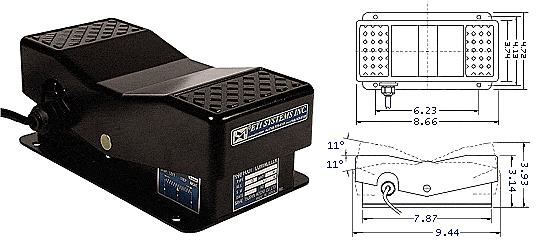Industrial foot controllers are important tools in automation, allowing workers to control machinery and processes easily. They enhance workflow efficiency across various industries, including manufacturing, construction, and medical equipment.
These devices provide hands-free precision, enabling operators to multitask and perform tasks more conveniently. This article explores the significance of industrial foot controllers in streamlining operations, making work processes smoother, safer, and more efficient.
The Role of Industrial Foot Controllers
Industrial foot controllers, often called foot pedals, are ergonomic devices designed to enable hands-free control of machinery and equipment. They have found widespread application across various industries, from manufacturing to healthcare, where precise control is imperative.
Functionality and Types
These controllers come in various forms, tailored to meet the specific needs of different industries. The two primary types are analog and digital foot controllers.
1. Analog Foot Controllers
Analog foot controllers have potentiometers and variable resistors that translate the pedal’s position into an analog signal. This signal can control various parameters, such as speed, pressure, or position.
2. Digital Foot Controllers
Digital foot controllers, on the other hand, utilize digital encoding to transmit control signals. They offer enhanced precision and can be programmed to perform complex tasks. Additionally, digital foot controllers can be integrated seamlessly with computer systems for enhanced automation.
Benefits of Industrial Foot Controllers
1. Precision and Control
One of the primary advantages of using industrial foot controllers is the level of precision they offer. Operators can finely adjust parameters, ensuring that machinery operates accurately. This precision is particularly vital in applications such as medical surgeries, where even the slightest error can have serious consequences.
2. Improved Safety
Safety is a paramount concern in industrial settings. Foot controllers enable operators to maintain a safe distance from potentially hazardous equipment while maintaining control. This reduces the risk of accidents and injuries, making workplaces safer.
3. Hands-Free Operation
Operators must simultaneously use their hands in many industrial processes for other tasks. Industrial foot controllers allow for hands-free operation, increasing efficiency by multitasking without compromising safety or precision.
4. Reduced Fatigue
Prolonged use of hand-operated controls can lead to operator fatigue and discomfort. Industrial foot controllers alleviate this issue by distributing the workload to the lower extremities, reducing the strain on the hands and arms. This not only improves operator comfort but also enhances productivity.
5. Customization and Integration
Modern industrial foot controllers are highly customizable and can seamlessly integrate into existing automation systems. This adaptability allows for tailoring controllers to specific workflow requirements, further enhancing efficiency.
Applications Across Industries
Industrial foot controllers find applications in various industries, benefiting from their unique advantages.
1. Manufacturing
In manufacturing processes, precise control over machinery is important. Industrial foot controllers are commonly used in welding, CNC machining, and assembly lines, where operators require hands-free control to ensure product quality and production speed.
2. Medical
The medical field relies on precision and sterility. Foot controllers are employed in surgical suites, enabling surgeons to control equipment such as electrocautery devices and endoscopes without compromising the sterile environment.
3. Entertainment
In the entertainment industry, stage technicians use foot controllers to control lighting, sound, and special effects during live performances. These controllers allow for seamless transitions and precise timing.
4. Robotics
Robotic applications require precise control over robotic arms and grippers. Industrial foot controllers allow operators to fine-tune movements, making them indispensable in automation and robotics.
Key Takeaways
Industrial foot controllers have evolved to become essential tools in enhancing workflow efficiency across industries. Their precision, safety features, and hands-free operation make them invaluable assets in modern industrial settings. By reducing operator fatigue and offering customization options, these controllers contribute to increased productivity and improved workplace safety.
ETI System embrace automation and demand greater precision, the role of industrial foot controllers will only become more prominent. Their versatility and adaptability ensure they remain at the forefront of technological advancements, connecting humans to machinery in a seamless dance of precision and control.



